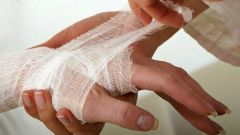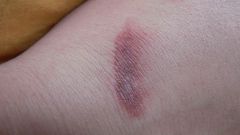Instruction
1
Burns to the face, like other types of burns, there are several degrees. Due to the fact that the relief person is not smooth, the skin has on different parts of uneven thickness, you may experience burns of different depths when exposed to the same temperature, or chemicals. The biggest lose get often ears, nose, lips, chin and eyelids.
2
When a person burns 1 degree affects only the top layer of the skin. In this connection, the swelling subsides rapidly, and the inflammation ceases. Scars after burns of the 1st degree remains, rarely can see the pigmentation of the affected areas. Treatment consists in treating the affected surface with antiseptics, lubricating her analgesic, or antibacterial drugs. An effective remedy for such burns is ice.
3
The 2nd degree burns are characterized by deep lesions of the skin. When this is observed the formation of bubblesfilled with liquid. Are the burns for 2-3 weeks. After they may form scars and change skin pigmentation. Treatment of burns of 2 degrees lies in the antiseptic treatment of affected areas of the face, opening blisters and removing them from the liquid. Then, the surface is treated with burn ointments or gels. In cases when infection occurs the place of the burn, apply an antibiotic drugs.
4
Burns 3rd degree damage all layers of the skin, in some cases, continue sebaceous and sweat glands and hair follicles. After healing of such burns on the skin formed of rough scars. Burns of 4 degrees are characterized by necrosis of the deep tissues, and charring of the skin. Burns grade 3 and 4 are heavy, they are almost always infected.
5
In the treatment of burns grade 3 and 4 special attention is paid to the fight against burnsOh disease: shock, intoxication, and infection, and is the primary antiseptic treatment of affected areas. After that, the burn is cleaned of necrotic tissue and prepare for a plastic surgery. Formed on the face of the scab is removed during dressing changes gradually. Burns 2, grade 3 and 4 are immunized against tetanus.



